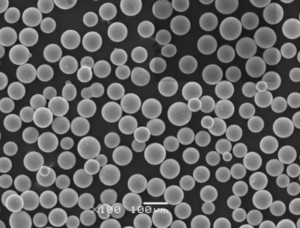概要 真空誘導溶解
最も洗練された金属部品がどのようにして作られるのか、不思議に思ったことはありませんか?真空誘導溶解(VIM)は、高純度金属合金の製造において重要なプロセスです。この技術では、電磁誘導を使って真空環境で金属を溶かします。真空環境はコンタミネーションを低減し、高純度の結果を保証するため、航空宇宙、医療機器、先端製造業など、優れた品質の材料を要求する産業で不可欠なものとなっています。
この記事では、VIMの世界を深く掘り下げます。生産される金属粉末の種類、組成、特性、用途、仕様など、基本的なことから技術的な詳細まで、すべてをカバーします。さあ、シートベルトを締めて、真空誘導溶解の徹底的な探求に備えよう!
真空誘導溶解とは?
真空誘導溶解(VIM)は、誘導加熱を使用して真空中で金属を溶解することにより、高品質の金属合金を製造するために使用される冶金プロセスです。真空環境は、ガスによる酸化や汚染を最小限に抑え、より純粋で安定した合金を生み出します。このプロセスは、組成と微細構造の厳格な制御を必要とする材料の製造に特に重要である。
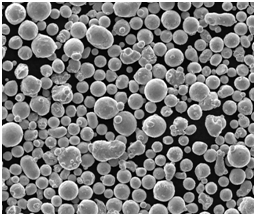
なぜ真空誘導溶解なのか?
他の溶解方法ではなく、なぜ真空誘導溶解を使用するのでしょうか?その答えは、非常に純粋で均質な金属を製造する能力にあります。真空は、望ましくない化合物や介在物を形成する可能性のある酸素や窒素のような不要なガスの存在を低減します。このためVIMは、タービンブレード、医療用インプラント、高強度部品など、高性能材料を必要とする用途に理想的です。
金属粉末の種類 真空誘導溶解
VIMの主な生産物の一つは、様々な用途に使用される金属粉末である。ここでは、この工程で生産される金属粉末の具体的なモデルをいくつか紹介する:
- Inconel 718
- 構成:ニッケル、クロム、鉄、モリブデン
- プロパティ:高強度、耐食性、良好な溶接性
- 用途:航空宇宙部品、ガスタービンブレード、原子炉
- チタン合金 (Ti-6Al-4V)
- 構成:チタン、アルミニウム、バナジウム
- プロパティ:高い強度対重量比、優れた耐食性
- 用途:医療用インプラント、航空宇宙構造物、自動車部品
- コバルトクロム合金(CoCrMo)
- 構成:コバルト、クロム、モリブデン
- プロパティ:耐摩耗性、生体適合性、高強度
- 用途:歯科用インプラント、整形外科用インプラント、工業用摩耗部品
- マルエージング鋼(18Ni-300)
- 構成:ニッケル、コバルト、モリブデン、チタン
- プロパティ:超高強度、靭性、良好な切削性
- 用途:航空宇宙部品、工具、高強度ファスナー
- アルミニウム合金 (AlSi10Mg)
- 構成:アルミニウム、シリコン、マグネシウム
- プロパティ:軽量、良好な熱伝導性、耐食性
- 用途:自動車部品、航空宇宙部品、電子機器
- ステンレススチール316L
- 構成:鉄、クロム、ニッケル、モリブデン
- プロパティ:耐食性、優れた機械的特性、生体適合性
- 用途:医療機器、化学処理装置、船舶用途
- Hastelloy X
- 構成:ニッケル、クロム、鉄、モリブデン
- プロパティ:高温強度、耐酸化性
- 用途:ガスタービン、航空宇宙部品、化学処理
- 工具鋼(H13)
- 構成:クロム、モリブデン、バナジウム、カーボン
- プロパティ:高靭性、耐摩耗性、耐熱疲労性
- 用途:ダイカスト金型、押出金型、熱間鍛造
- ニッケル合金625
- 構成:ニッケル、クロム、モリブデン、ニオブ
- プロパティ:耐食性、高強度、溶接性
- 用途:海洋工学、化学処理、航空宇宙
- 銅合金(CuCrZr)
- 構成:銅、クロム、ジルコニウム
- プロパティ:高い導電性、良好な機械的特性
- 用途:電気接点、溶接電極、熱交換器
金属粉末の組成
| 金属粉 | 構成 | プロパティ | 用途 |
|---|---|---|---|
| Inconel 718 | ニッケル、クロム、鉄、モリブデン | 高強度、耐食性 | 航空宇宙、ガスタービン、原子炉 |
| チタン合金 (Ti-6Al-4V) | チタン、アルミニウム、バナジウム | 高い強度対重量比 | 生物医学インプラント、航空宇宙 |
| コバルトクロム合金(CoCrMo) | コバルト、クロム、モリブデン | 耐摩耗性、生体適合性 | 歯科インプラント、整形外科インプラント |
| マルエージング鋼(18Ni-300) | ニッケル、コバルト、モリブデン、チタン | 超高強度、強靭性 | 航空宇宙、工具、ファスナー |
| アルミニウム合金 (AlSi10Mg) | アルミニウム、シリコン、マグネシウム | 軽量、良好な熱伝導性 | 自動車、航空宇宙、エレクトロニクス |
| ステンレススチール316L | 鉄、クロム、ニッケル、モリブデン | 耐食性、生体適合性 | 医療機器、化学処理、海洋 |
| Hastelloy X | ニッケル、クロム、鉄、モリブデン | 高温強度 | ガスタービン、航空宇宙、化学処理 |
| 工具鋼(H13) | クロム、モリブデン、バナジウム、炭素 | 高い靭性、耐摩耗性 | ダイカスト金型、押出金型、鍛造品 |
| ニッケル合金625 | ニッケル、クロム、モリブデン、ニオブ | 耐食性、高強度 | 海洋工学、化学処理 |
| 銅合金(CuCrZr) | 銅、クロム、ジルコニウム | 高い導電性 | 電気接点、溶接電極 |
の特徴 真空誘導溶解
VIMにはいくつかの特徴がある:
- 真空環境:ガスによる汚染を低減し、高純度を確保。
- 誘導加熱:効率的で均一な溶解を実現。
- 管理された雰囲気:合金組成の精密な制御が可能。
- 柔軟性:幅広い金属と合金に適している。
- 均質性:均一な微細構造を持つ材料を製造。
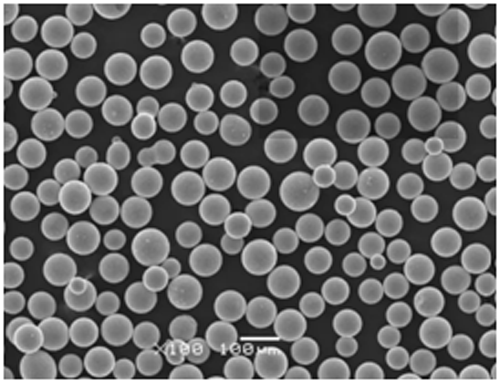
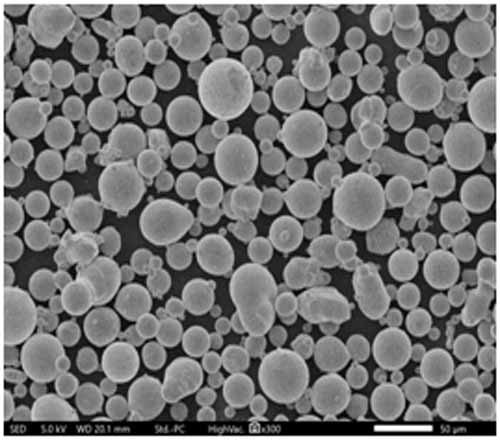
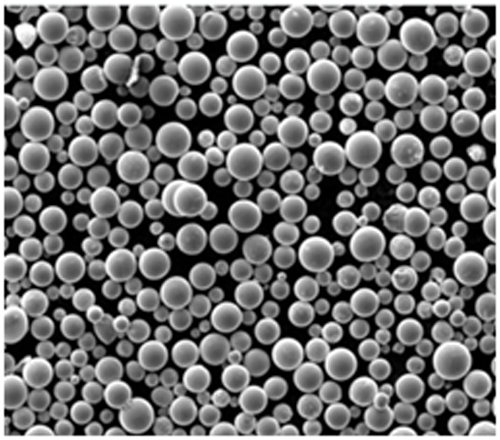
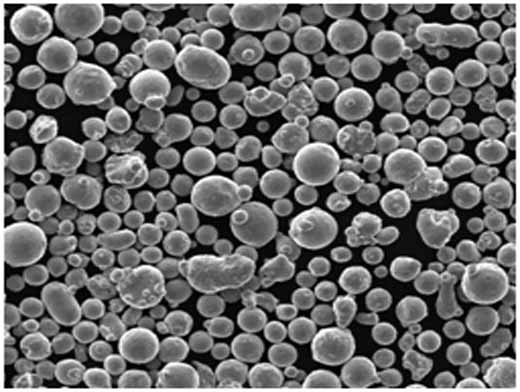
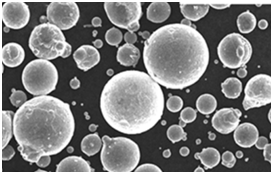
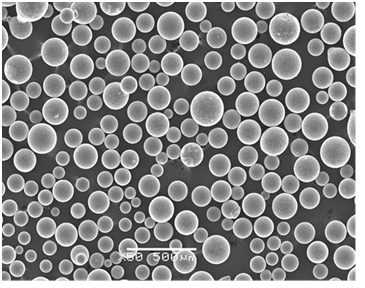
真空誘導溶解の応用
VIMは、以下のようなさまざまな業界で応用されている:
| 産業 | 用途 |
|---|---|
| 航空宇宙 | タービンブレード、構造部品、ファスナー |
| 医療機器 | インプラント、手術器具 |
| 自動車 | エンジン部品、軽量構造 |
| エレクトロニクス | 導電性材料、ヒートシンク |
| インダストリアル | 工具、耐摩耗部品、化学加工 |
| マリン | 耐食コンポーネント、プロペラシャフト |
仕様、サイズ、等級、規格
仕様、サイズ、グレード、規格に関して言えば、VIMが製造する金属粉末は、業界の要件を満たすための厳格な基準を遵守しています。以下はその詳細です:
| 金属粉 | 仕様 | サイズ | グレード | 規格 |
|---|---|---|---|---|
| Inconel 718 | ASMB637、AMS5662 | 5~45μm、15~45μm | グレード1、グレード2 | ASTM、AMS |
| チタン合金 (Ti-6Al-4V) | アストレムF136、アムス4907 | 5~25μm、15~53μm | 5年生, 23年生 | ASTM、AMS |
| コバルトクロム合金(CoCrMo) | ASTM F75、ISO 5832-4 | 10~45μm、20~63μm | グレード1、グレード2 | ASTM、ISO |
| マルエージング鋼(18Ni-300) | ASM538、AMS6514 | 5~45μm、15~45μm | グレード300、グレード350 | ASTM、AMS |
| アルミニウム合金 (AlSi10Mg) | ISO3522、AMS4289 | 10~45μm、20~63μm | グレードA、グレードB | ISO、AMS |
| ステンレススチール316L | A276, ISO 5832-1 | 10~45μm、20~63μm | グレードL | ASTM、ISO |
| Hastelloy X | ASMB572、AMS5536 | 5~45μm、15~45μm | グレード1、グレード2 | ASTM、AMS |
| 工具鋼(H13) | A681, SAE J438 | 10~45μm、20~63μm | グレードA、グレードB | ASTM、SAE |
| ニッケル合金625 | ASMB446、AMS5666 | 5~45μm、15~45μm | グレード1、グレード2 | ASTM、AMS |
| 銅合金(CuCrZr) | アストムB422、ディン17670 | 10~45μm、20~63μm | グレードA、グレードB | ASTM、DIN |
サプライヤーと価格詳細
VIMで製造された金属粉末を調達する場合、主要サプライヤーとその価格を知ることが不可欠です。以下はそのスナップショットである:
| サプライヤー | 金属粉 | 価格帯(kgあたり) |
|---|---|---|
| カーペンター・テクノロジー | インコネル718、チタン合金 | $200 – $400 |
| プラクセア・サーフェス・テクノロジー | コバルトクロム合金、マルエージング鋼 | $250 – $450 |
| LPWテクノロジー | アルミニウム合金、ステンレス鋼316L | $150 – $350 |
| エリコン・メトコ | ハステロイX、工具鋼 | $300 – $500 |
| サンドビック積層造形 | ニッケル合金625、銅合金 | $220 – $420 |
長所と短所: 真空誘導溶解
VIMの利点と限界を考えてみよう:
| 長所 | 短所 |
|---|---|
| 高純度でコンタミネーションを低減 | 高い運営コスト |
| 合金組成の精密制御 | 複雑な設備とメンテナンス |
| 均一な微細構造 | 特定の金属と合金に限定 |
| 幅広い合金製造への柔軟性 | 熟練したオペレーターと厳格な工程管理が必要 |
| インクルージョン形成の減少 | 真空要件は難しい |
徹底検証真空誘導溶解で製造される金属粉末
インコネル718:強度と汎用性
インコネル718は、高強度、耐食性、優れた溶接性で知られるニッケルクロム合金です。航空宇宙産業では、タービンブレードやその他の高温用途に広く使用されている。モリブデンの添加により機械的特性が向上し、原子炉やその他の厳しい環境にも適している。
チタン合金(Ti-6Al-4V):軽くて強い
グレード5チタンとしても知られるTi-6Al-4Vは、航空宇宙産業および生物医学産業における主力合金です。その高い強度対重量比と優れた耐食性は、航空機構造や医療用インプラントに理想的です。この合金の生体適合性は、人体組織との適合性を保証し、人工装具や整形外科用器具の最良の選択となっています。
コバルトクロム合金(CoCrMo):耐久性と生体適合性
コバルトクロム合金、特にCoCrMoは、その耐摩耗性と生体適合性で有名です。これらの特性は、歯科用インプラント、整形外科用インプラント、工業用摩耗部品に最適です。CoCrMo合金は、過酷な環境に耐え、応力下でも機械的完全性を維持する能力は、他に類を見ません。
マルエージング鋼(18Ni-300):高い強度と靭性
18Ni-300のようなマルエージング鋼は、航空宇宙、工具、高強度ファスナーなどに使用される超高強度材料です。独自の時効処理により、靭性を損なうことなく機械的特性が向上します。そのため、強度と延性の両方が重要な用途に最適です。
アルミニウム合金(AlSi10Mg):軽量で導電性
AlSi10Mgは、優れた熱伝導性と軽量特性を持つアルミニウム合金です。自動車産業や航空宇宙産業において、優れた機械的特性と軽量性が要求される部品に広く使用されています。シリコンとマグネシウムの添加により、鋳造性と機械的強度が向上します。
ステンレススチール316L: 耐腐食性と生体適合性
ステンレス鋼316Lは、耐食性と生体適合性で知られる316ステンレスの低炭素鋼種です。医療機器、化学処理装置、海洋用途に一般的に使用されています。塩化物環境下での孔食や隙間腐食に強いため、過酷な条件下でも信頼できる選択肢となります。
ハステロイX:高温強度
ハステロイXは、卓越した高温強度と耐酸化性を有するニッケル基超合金です。ガスタービン、航空宇宙部品、化学処理などに使用されています。高温下でも機械的特性を維持できるため、過酷な用途でも高い信頼性を発揮します。
工具鋼(H13):強靭で耐摩耗性
H13は、高い靭性と耐摩耗性で知られるクロム-モリブデン-バナジウム合金工具鋼です。ダイカスト金型、押出金型、熱間鍛造用途に使用されます。この合金は耐熱疲労性に優れているため、高温金型に適しています。
ニッケル合金625耐食性と溶接性
ニッケル合金625は、耐食性、高強度、優れた溶接性で有名です。海洋工学、化学処理、航空宇宙用途に使用されています。耐孔食性、耐隙間腐食性に優れているため、過酷な環境での使用に最適です。
銅合金(CuCrZr):導電性と耐久性
CuCrZrは、高い導電性と優れた機械的特性を持つ銅合金である。電気接点、溶接電極、熱交換器などに使用される。クロムとジルコニウムの添加により強度と耐久性が向上し、高性能の電気用途に適しています。

よくある質問
| 質問 | 回答 |
|---|---|
| 真空誘導溶解(VIM)とは? | VIMは、誘導加熱を用いて真空中で金属を溶解し、高純度の金属合金を製造するプロセスである。 |
| なぜ他の溶解方法ではなくVIMを使うのか? | VIMはコンタミネーションを減らし、組成を正確にコントロールし、高純度の結果を提供する。 |
| どのような業界でVIMが使われているのか? | 航空宇宙、医療機器、自動車、エレクトロニクス、工業、海洋産業。 |
| VIMのメリットは? | 高純度、精密制御、均一な微細構造、汚染の低減。 |
| VIMに制限はありますか? | 運転コストが高く、装置が複雑で、特定の金属に限られ、熟練したオペレーターを必要とする。 |
| VIMを使ってどのような金属を溶解できますか? | ニッケル合金、チタン合金、コバルトクロム合金、マルエージング鋼など幅広い。 |
| VIMはどのようにして高純度を確保しているのか? | 真空環境はガスによる汚染を低減し、最終的な合金の不純物を最小限に抑える。 |
| VIMは大規模生産に使えるか? | はい、しかし、コストと複雑さのため、高価値で高純度の用途でより一般的に使用されています。 |
| VIMメタルの主な特性は? | 高強度、耐食性、生体適合性、高温安定性。 |
| VIMパウダーの主要サプライヤーは? | Carpenter Technology、Praxair Surface Technologies、LPW Technology、Oerlikon Metco、Sandvik Additive Manufacturing。 |
結論
真空誘導溶解は、高品質の金属合金の生産に不可欠なプロセスです。純粋で均質な材料を生産するその能力は、優れた性能を要求する産業において不可欠です。航空宇宙部品から医療用インプラントまで、VIMの用途は広大で多様です。このプロセスの複雑さを理解することで、世界で最も先進的な材料のいくつかを作るために費やされる精度と配慮を理解することができます。
このガイドブックでは、VIMの基本原理から具体的な金属粉末まで、VIMの奥深さを探った。VIMの組成、特性、用途、そして主要なサプライヤーと価格まで網羅しています。この包括的なガイドが、真空誘導溶解の魅力的な世界への貴重な洞察となれば幸いです。
